Kagawa University implemented the Development Project for Hygiene Education and School Health Room System in Cambodia as an EDU-Port Japan Research Project in 2021-22. As well as promoting the establishment of a school health room system, hygiene education and the effective use of school health textbooks in Cambodia through technology transfer in February 2020, the project aims to establish a school health data management system and to train school health education researchers.
As part of the project, in 2021 Kagawa University created the Cambodia School Health Checkup Data Management System app for centrally managing school health checkups and pupils’ physical measurement data. In September 2022, they provided training in the use of the school health checkup data management system at an elementary school in Phnom Penh and began a trial run of the app. In addition, Mr. Yung Kunthearith, Deputy Director of the School Health Department of the Cambodian Ministry of Education, Youth and Sports (MoEYS), and Mr. Suon Pileap, the coordinator for this project, visited Japan in December 2022.
After returning home, they reported on the project activities which the Cambodian ministry has begun to run on its own.
1. Guidance on school health data management methods
Dr. Kunthearis, Deputy Director of MoEYS, and Mr. Suon learned how the government and schools in Japan manage school health checkup data, and under the guidance of the school health director of MoEYS, they are now providing training in Cambodia. In addition, MoEYS formulated a human resources development plan to ensure continued implementation of the Scool Health Policy in Cambodia. Based on the plan, school health checkups and hygiene education will be led by the Ministry.
-
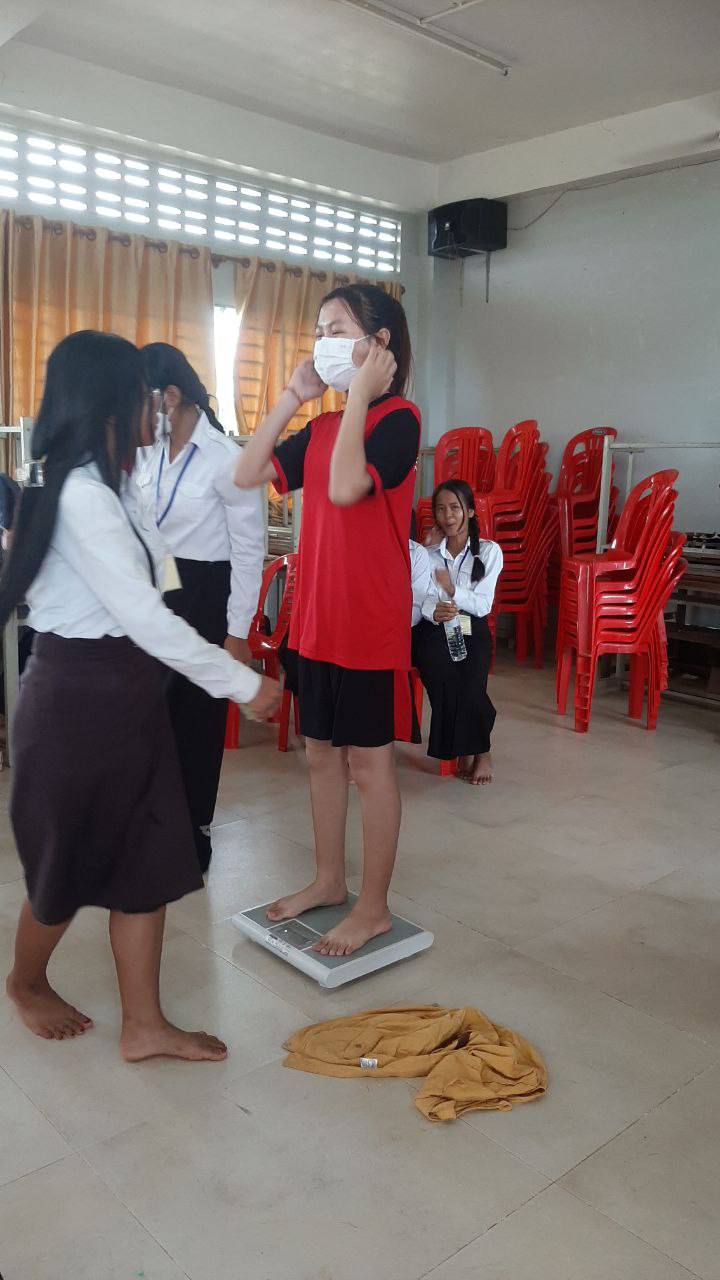 Measuring weight
Measuring weight -
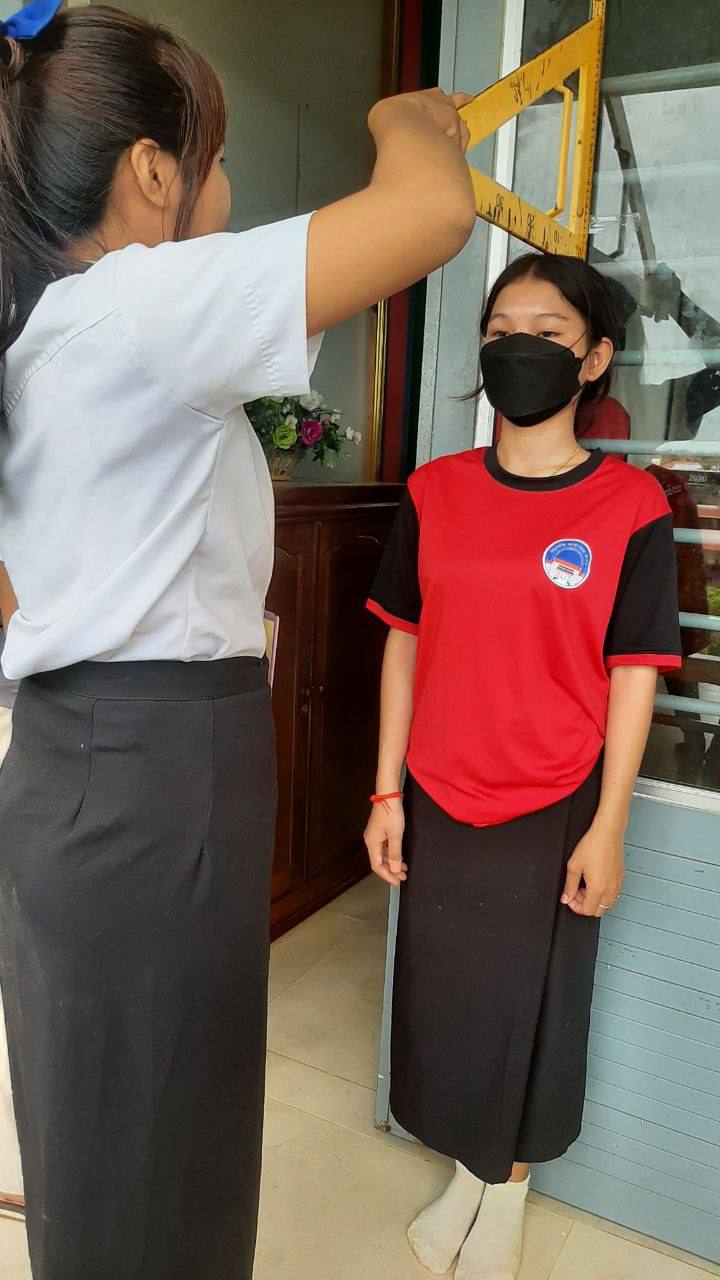 Measuring height (1)
Measuring height (1) -
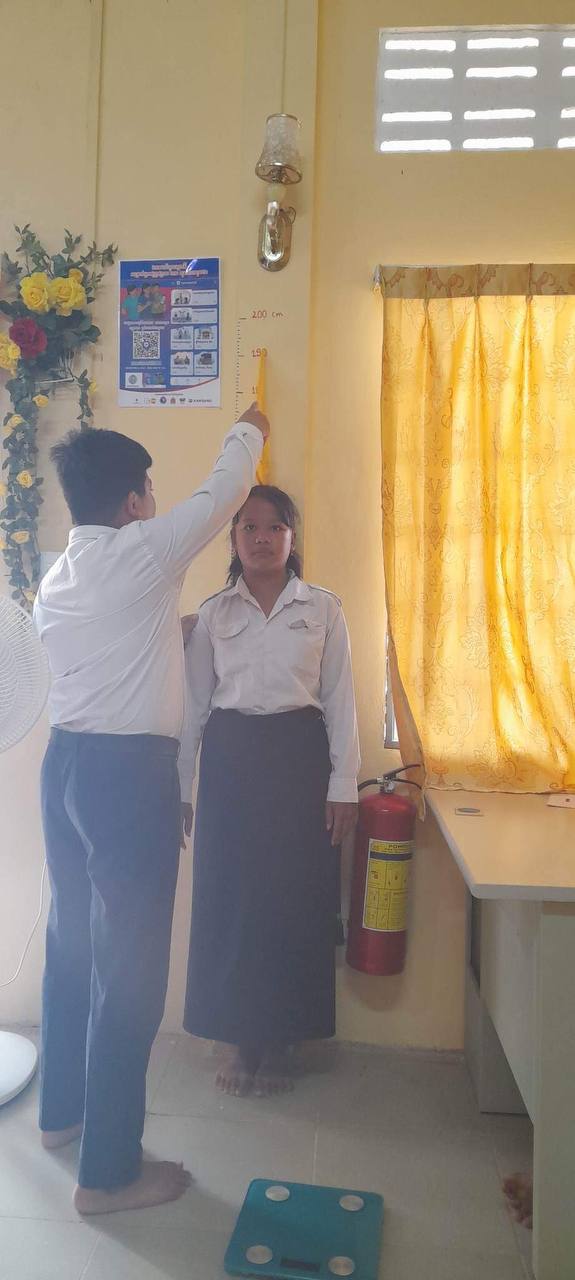 Measuring height (2)
Measuring height (2) -
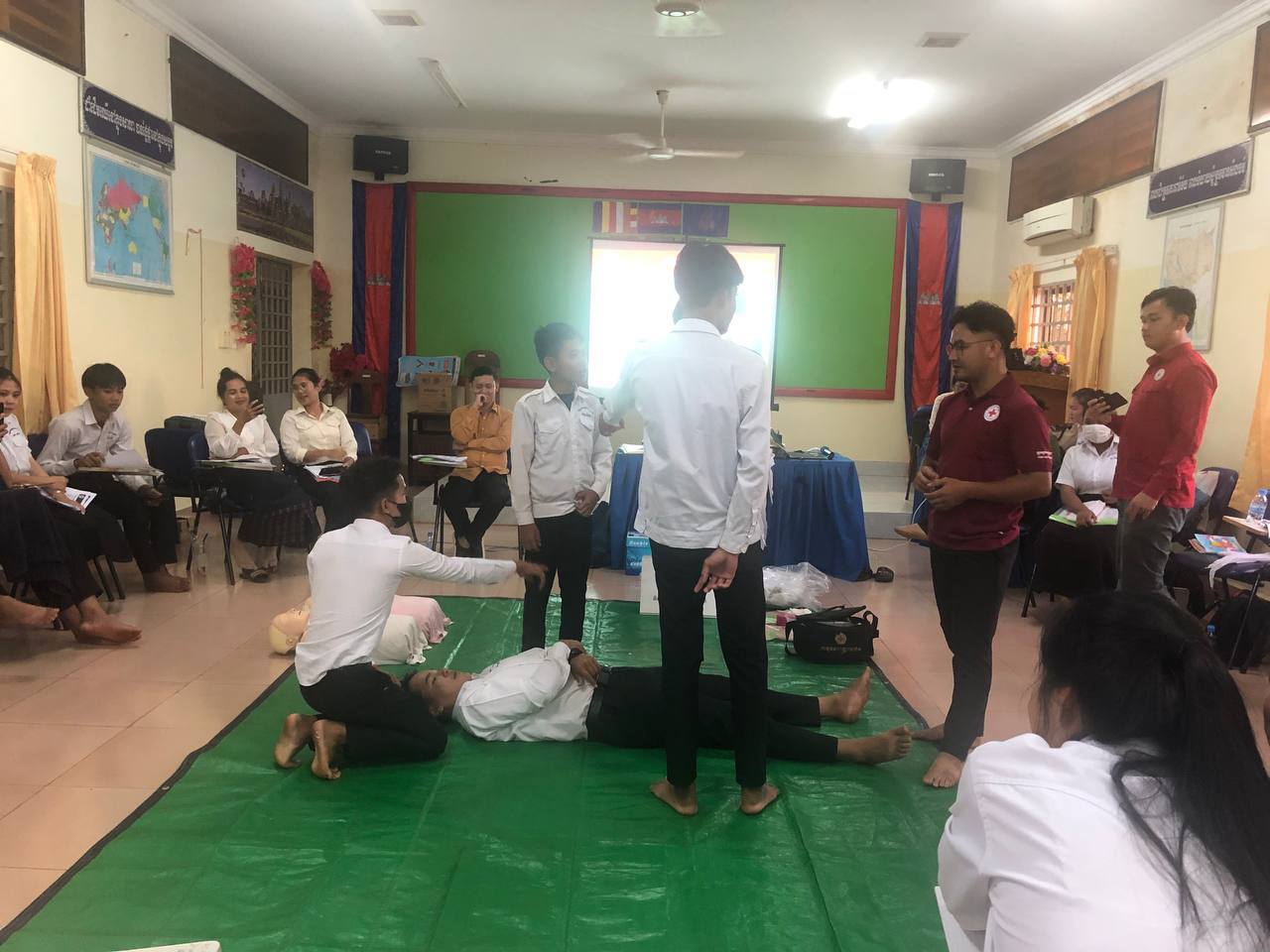 Learning how to transport an injured person
Learning how to transport an injured person -
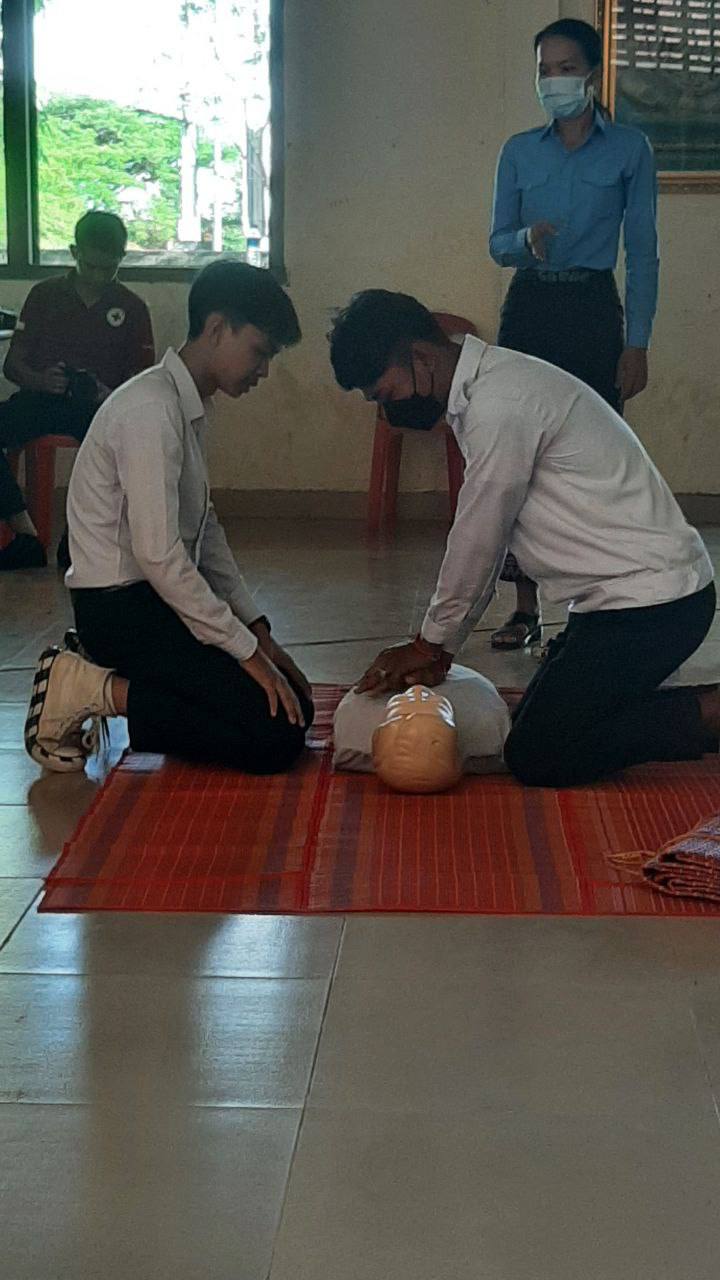 BLS training*
BLS training*
*BLS stands for Basic Life Support and generally refers to the type of care that first-responders, healthcare providers and public safety professionals provide to anyone who is experiencing cardiac arrest, respiratory distress or an obstructed airway.
2. Practical training for health room teachers
Ministry staff provide practical training for health room teachers in maintenance checks of school health room equipment.
-
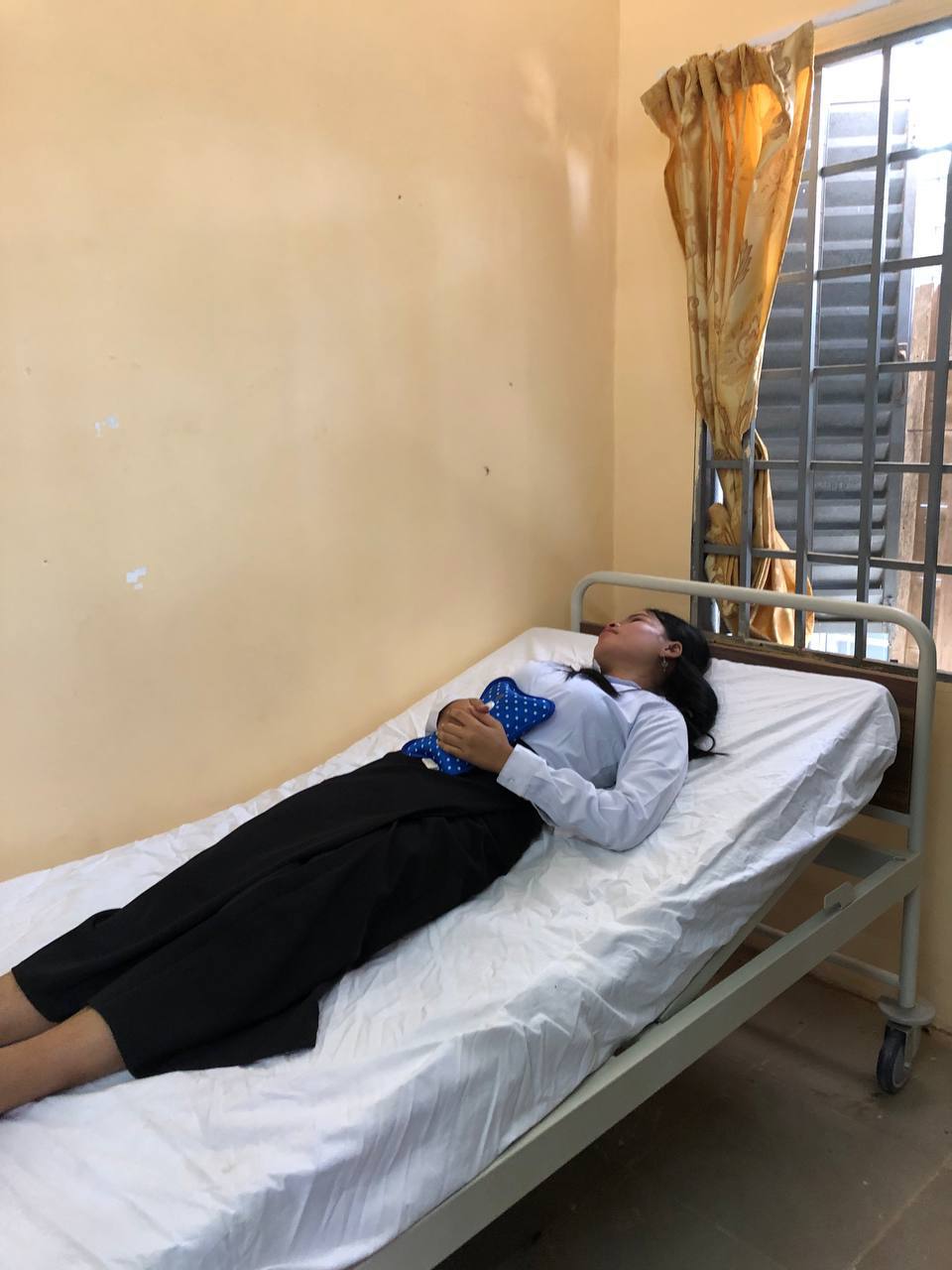 Health room bed
Health room bed -
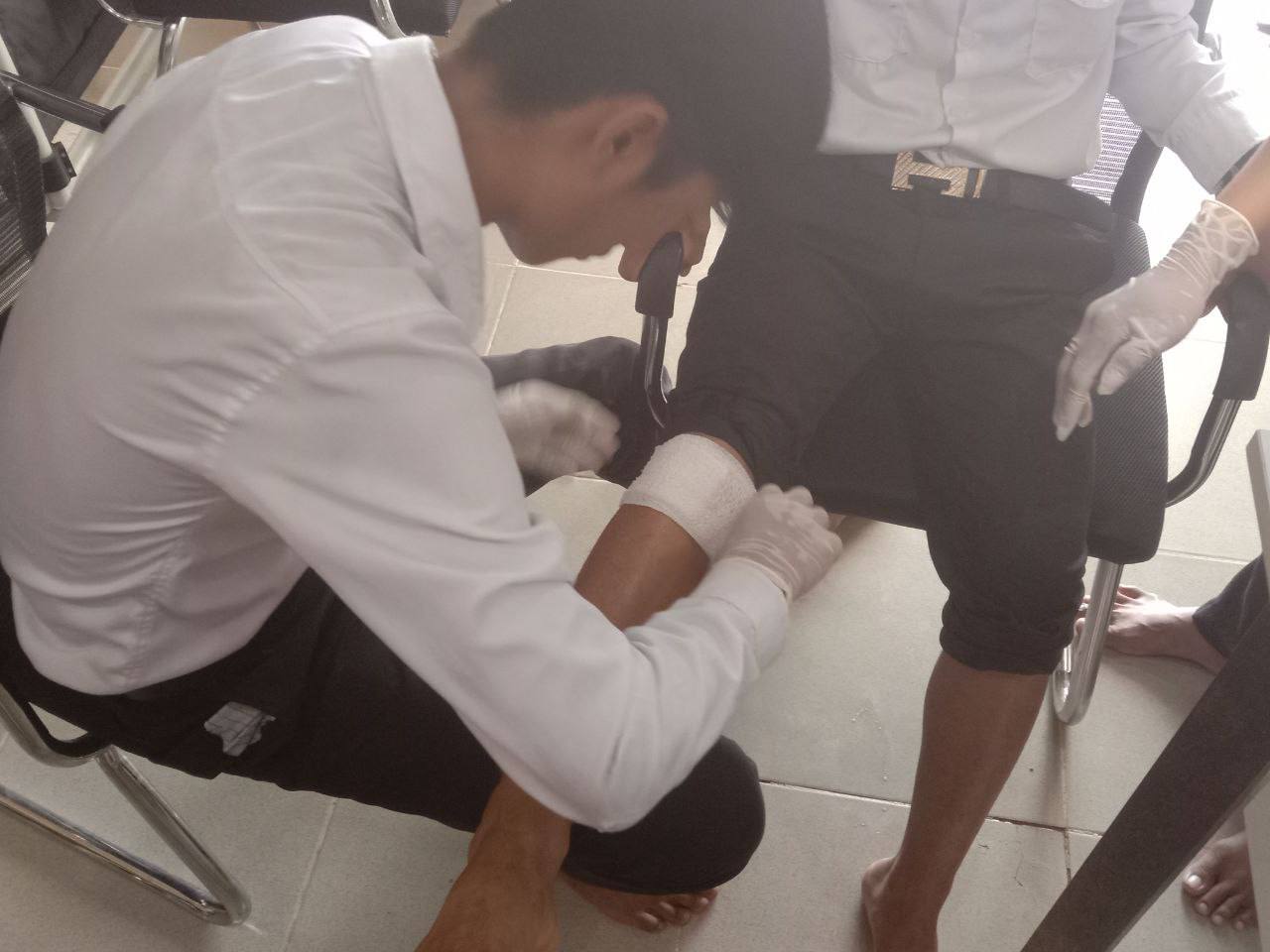 Health room teacher treating an injury
Health room teacher treating an injury -
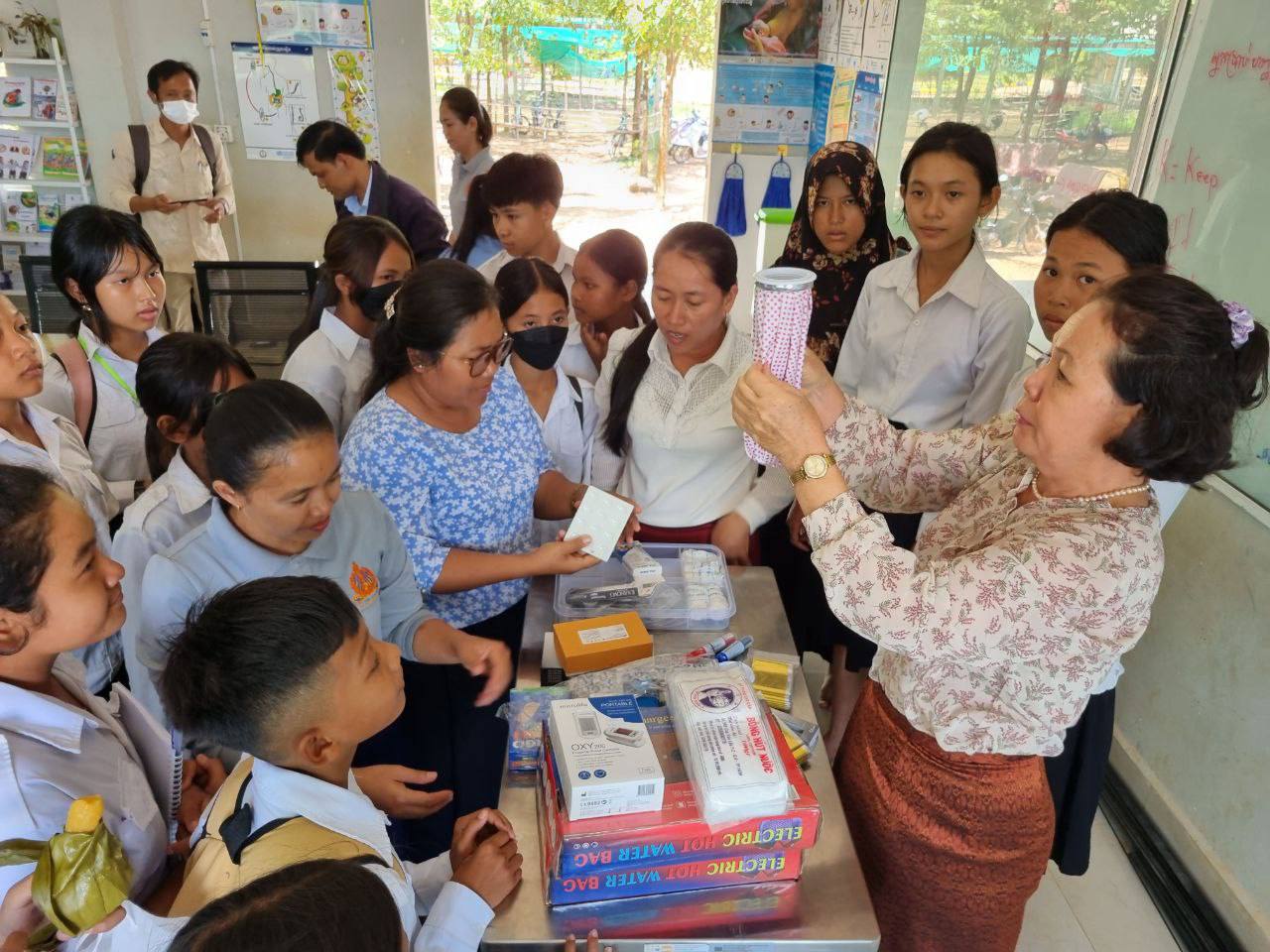 Preparing a first aid kit(ice pack)
Preparing a first aid kit(ice pack)
3. Establishment and operation guidance for health rooms in accordance with national standards
Ministry staff visit model schools in each province and provide training in establishing and running health rooms in accordance with national standards. Some schools do not have a vacant room that can be used as a health room and in such cases set up a “health area” in the staffroom or library.
-
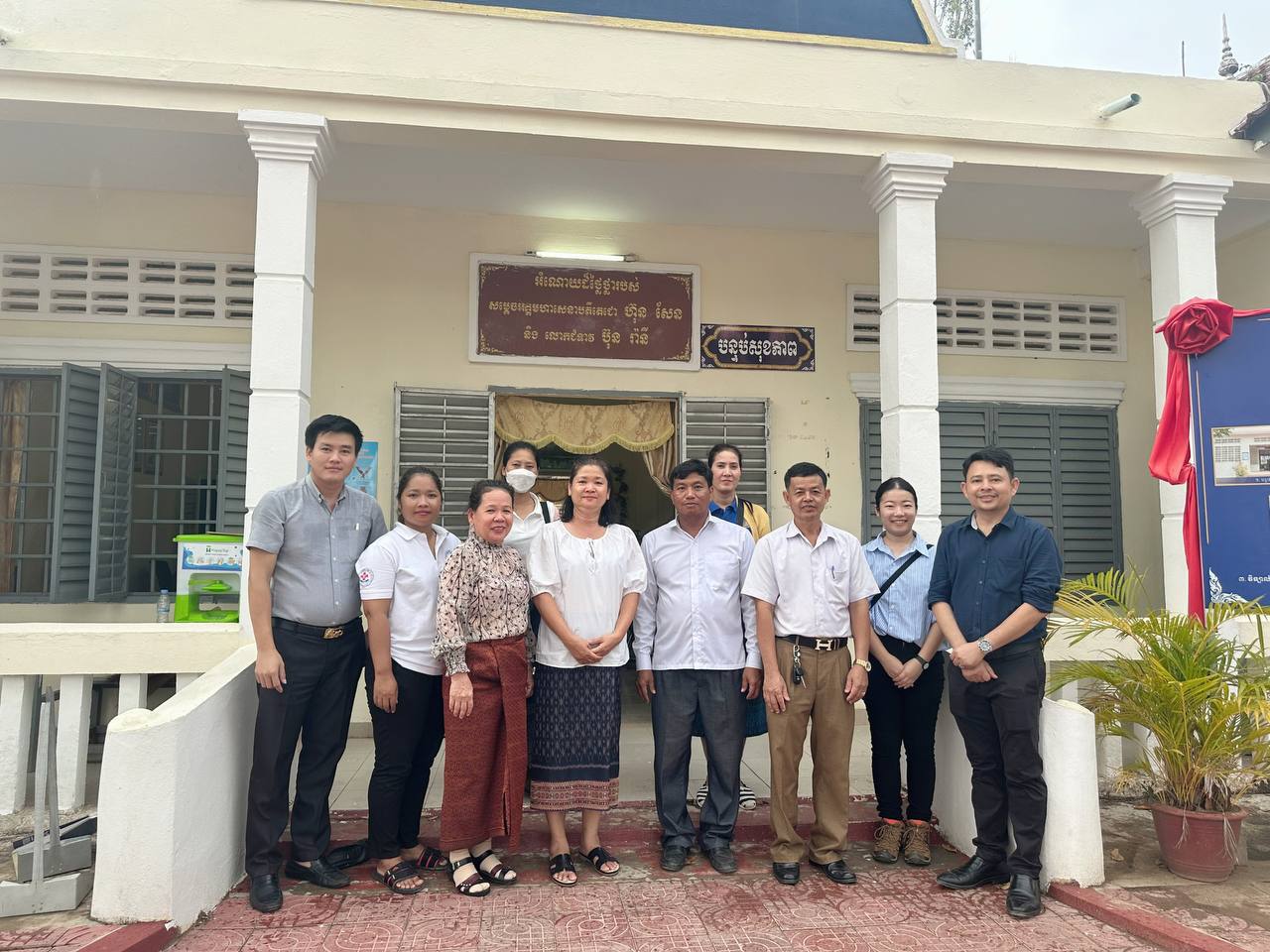 Dr. Chhay Kimsotheavy, director of the school health department (fourth from the left in the front row), who visited Japan for school health training in 2017, and Mr. Suon participated in training at Hun Sen Khchau High School in Kampong Cham Province.
Dr. Chhay Kimsotheavy, director of the school health department (fourth from the left in the front row), who visited Japan for school health training in 2017, and Mr. Suon participated in training at Hun Sen Khchau High School in Kampong Cham Province. -
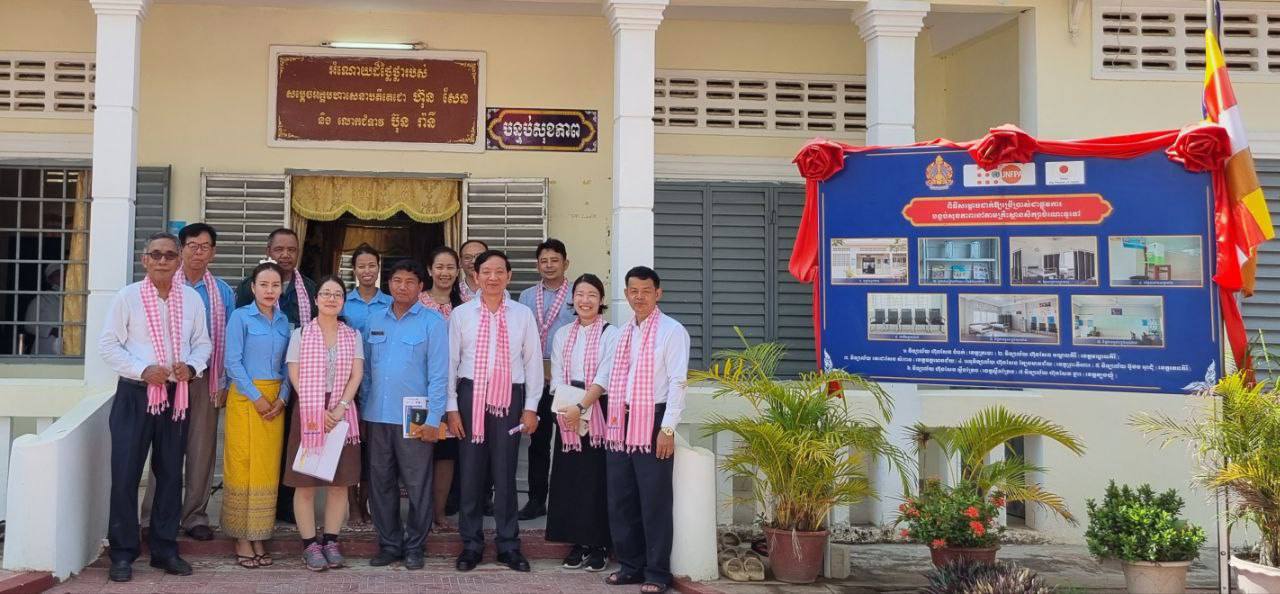 Deputy Director Dr. Kunthearith (3rd from right, front row) participated in training at the school.
Deputy Director Dr. Kunthearith (3rd from right, front row) participated in training at the school.
4. On-site data entry training for the system
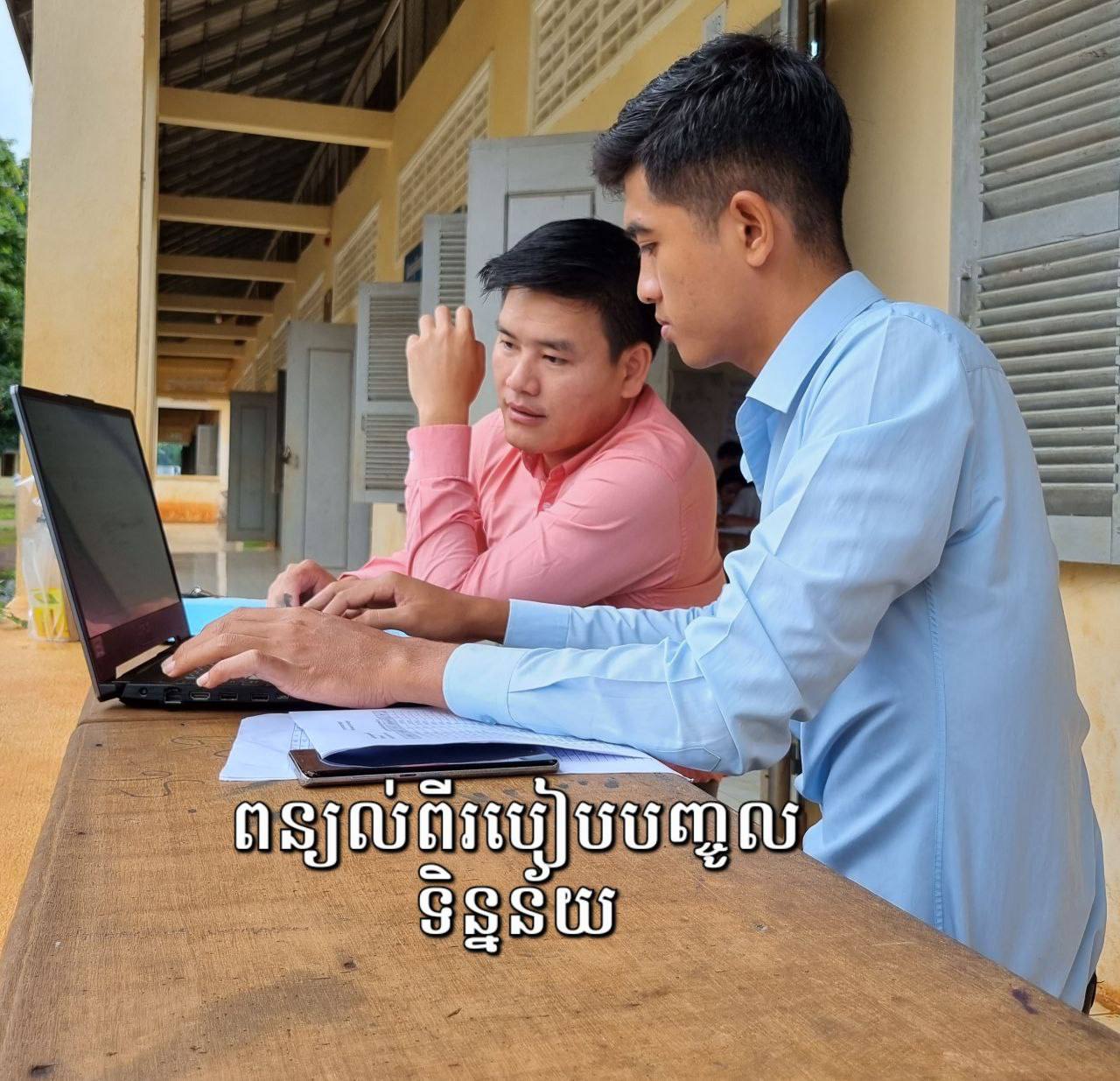
The graph below shows the health checkup data of an elementary school near the royal palace in Phnom Penh which was input into the system. The elementary school is a school health model school designated by MoEYS. About 20% of the children at the school tend to be overweight.
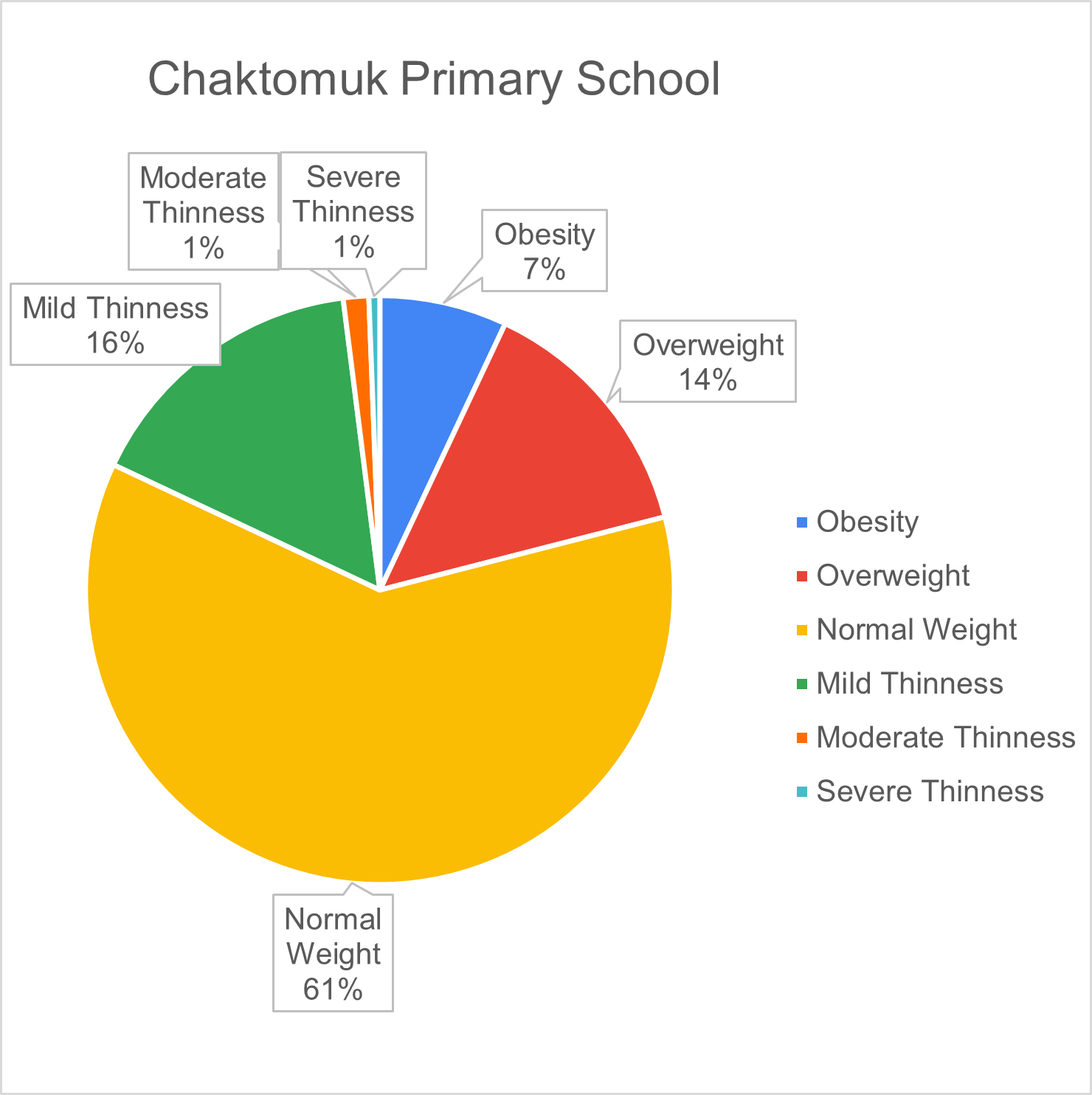
The following graph shows data for a high school in Kratie Province, 144km and a 3-hour drive northeast of the capital Phnom Penh. 30% of the students at the school tend to be thin.
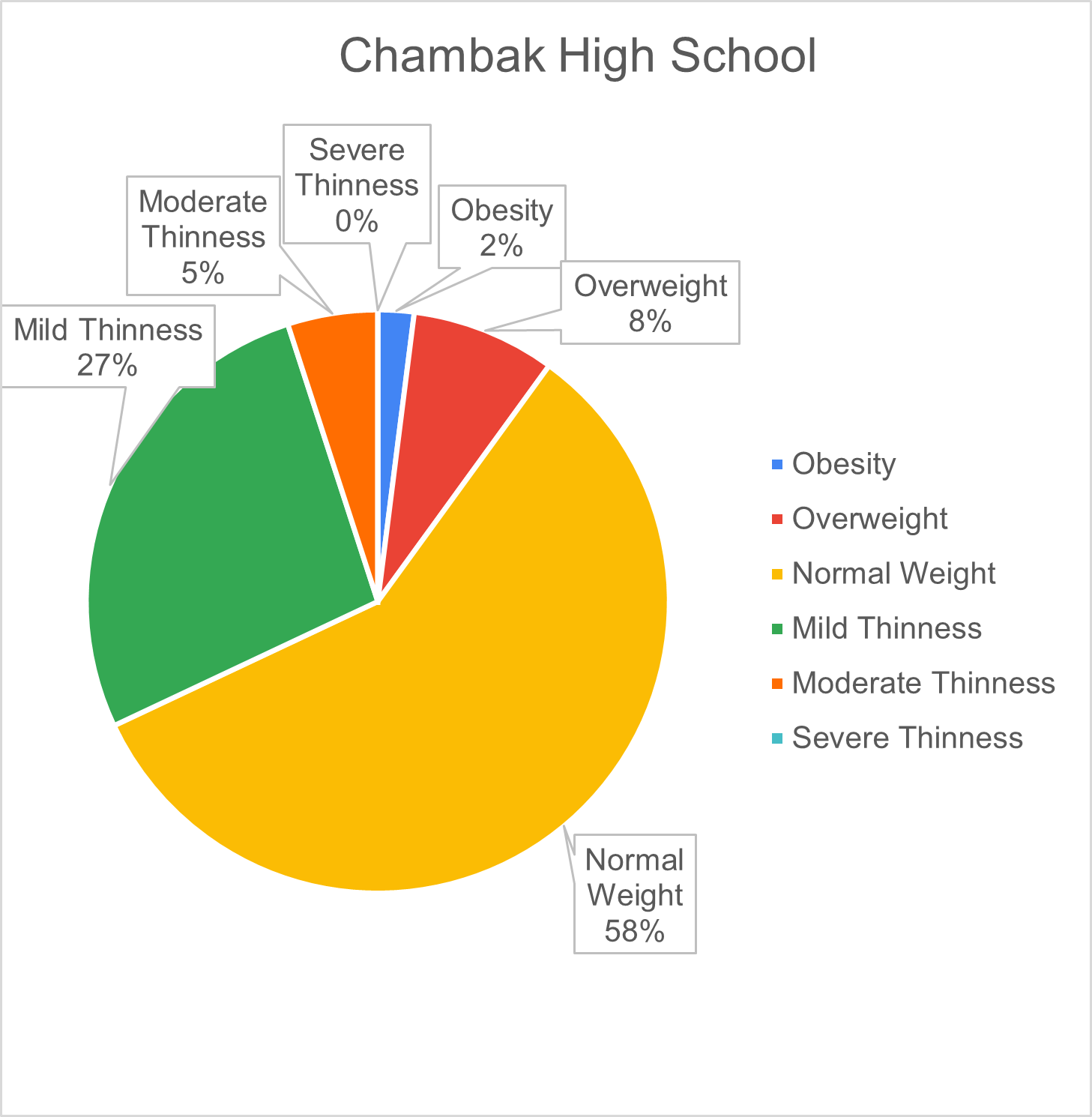
5. Plans to expand target schools next year
In early November 2023, MoEYS expanded activities to measure students’ weight, height and eyesight to eight provinces (Kampong Cham, Tboung Khmum, Preah Vihear, Oddar Meanchey, Mondulkiri, Kratie, Stung Treng and Ratanakiri). On this occasion, only one school was selected per province (except in Kampong Cham where four schools were selected), but the number of target schools will be increased next year.
Up until now, physical examinations have not been conducted in schools in Cambodia and it has not been possible to calculate the national age-specific weight, height and eyesight averages that are the barometers of children’s growth. Comparisons with other regions or schools are also not possible at this time. In future, it is expected that the data will be used to improve children’s nutrition through nutrition learning, school lunches, etc., thus contributing to the promotion of health education in Cambodia.







